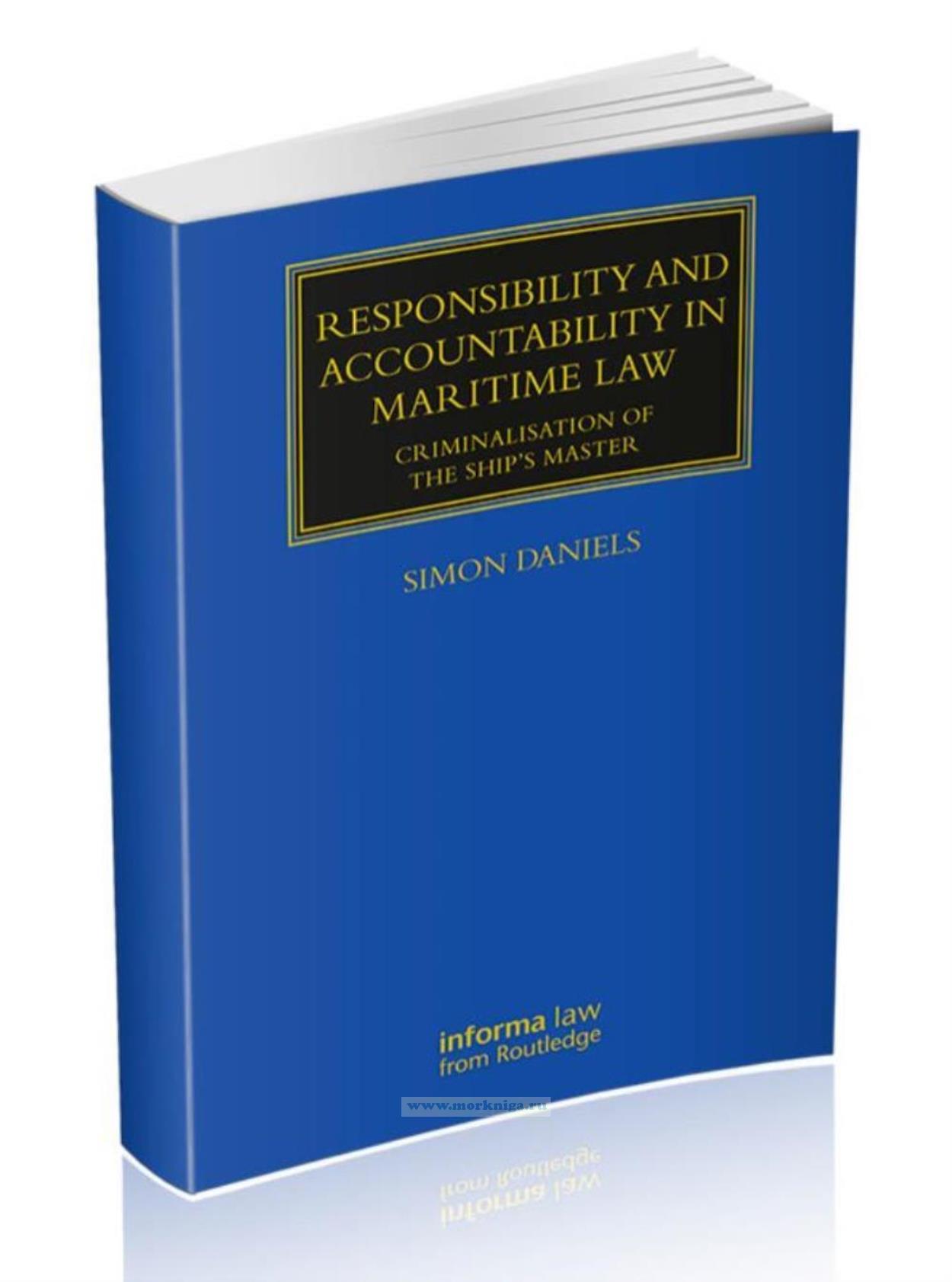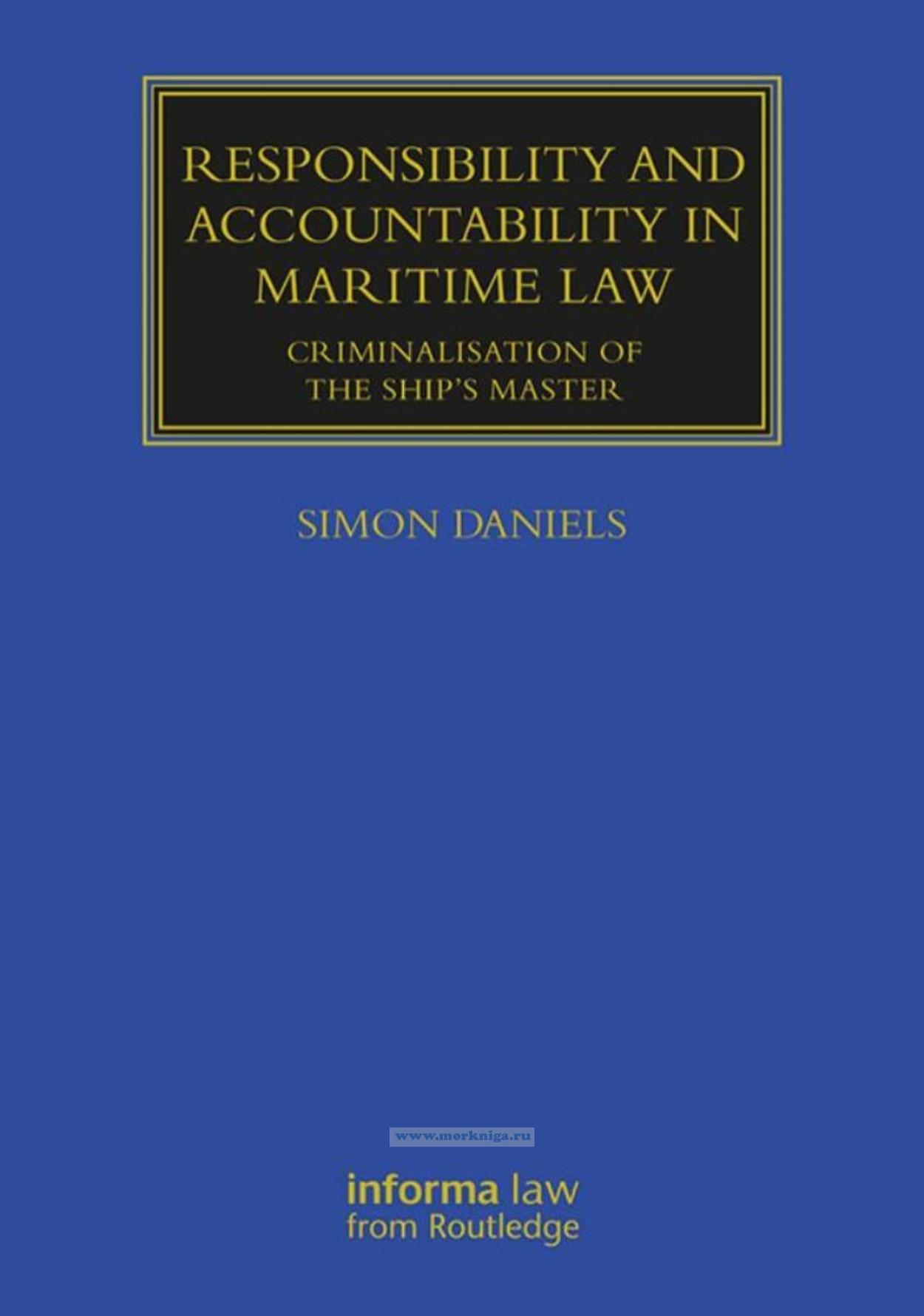Responsibility and Accountability in Maritime Law. Criminalisation Of The Ship’s Master/Ответственность и подотчетность в морском праве. Уголовная ответственность Капитана Судна
Книга на английском языке.
The criminalisation of seafarers has been observed as a growing phenomenon for more than forty years, presenting a picture of increasing liability upon the Master even though their responsibilities remain essentially unchanged in generations of maritime law. Because of the demand by society to find someone to blame for environmental and human loss, there is a constant flow of cases, which serve to confirm the phenomenon but offer no solutions to defend the innocent. The structure of the maritime environment in which they work has changed dramatically, as evidenced by the complex evolution of fleet ownership and management, leaving the Master with diminished management influence. This book has been written in a format which meets the needs of lawyers, academics and maritime professionals, with the aim to analyse the character of criminalisation to determine the features which characterise the phenomenon in Port and Flag State contexts; it interrogates the aim to define the nature of criminalisation and identifies the constituent problems in such criminal accountability. Each chapter relies heavily on case studies to illustrate how the laws which reflect national policy underpinning those priorities are applied in practice. This structure enables an understanding of the problems in the criminal process, with a view to offering options for solutions. The book is directly relevant to a broad range of parties which includes lawyers, academics, P & I clubs, seafarers, shipowners, managers and agents, and national and international seafaring unions.
Contents
List of cases
Introduction
Chapter 1 What is a crime?
The essence of criminal accountability
Prosecutions and the Master’s human rights
Chapter 2 Sources of law
State sovereignty
Sovereignty and maritime Conventions
The case of the Arctic Sunrise
The enforcement of Conventions in domestic law
The case of the Gladys Bowater
The case of Gandara v Bennett: Gladys Bowater confirmed
Interpreting clear statements in Port State laws
The case of Spector v Norwegian Cruise Line
Tensions between sources of laws
The case of Captain Mangouras of the Prestige
Chapter 3 The master and the ship
Who is the Master?
The Master’s Overriding Duty
The case of R v Juanga
The Master’s responsibility for safe navigation
Safe navigation of what? Trouble with English law
The case of R v Goodwin
Assistance from overseas jurisdictions
Chapter 4 The risk business
The Master and their accountability
The Smyrna and the Moto
Business and law
The business of the owner
The financial magnitude of the risk
Any way to make a profit
The Master-Owner relationship
The case of the Sussex Oak
The case of the Tasman Pioneer
The impact of Statute Law on the relationship between the Master and the owner
The case of Captain Schettino of the Costa Concordia
Chapter 5 Port state sovereignty: what could possibly go wrong?
Port State jurisdiction
The case of Captain Laptalo of the Coral Sea
Strict liability - its use and abuse
The case of Captain Schr?der of the Zim Mexico III
The case of Captain Chawla of the Hebei Spirit
China’s emergence on the maritime stage
The case of the Kota Nebula
Chapter 6 Management Control By The Flag State
The Flag State and UNCLOS
The case of the Mavi Marmara
The Flag State and the Master’s accountability
The case that will not go away: Regina v Dudley and Stephens
The Master’s management of the Flag State’s human rights
The case of Hook v Cunard
The role of Flags of Convenience
Chapter 7 Criminal Accountability For Neglience
The evolution of negligence in maritime law
The case of Donoghue v Stevenson
What is criminal negligence?
What is the gross negligence element?
The case of the Seistan
The gulf between civil and criminal accountability
Neither one thing nor the other
The case of Michael Hubble of the Pride of Bilbao
Conclusions?
Chapter 8 criminalisation and seafarers’ rights: problems and solutions
Rights and responsibilities
Human rights protection
What is a crime under the Maritime Labour Convention?
The case of Wilson v Secretary of State for Transport
The case of the Wakashio: a step-by-step study of Port State justice and the consequences on human rights
Criminalisation of the Master and human rights: a solution?
Chapter 9 Investigations, Evidence And Selfincrimination
What is the purpose of an investigation?
The case of Hoyle v Rogers
Captain Wolfgang Schr?der again
Gathering evidence and record-keeping
What is evidence for legal purposes?
When is evidence unnecessary?
Presenting evidence to the Court
The evaluation of evidence
So, what must the evidence establish?
Insufficiency of evidence - no case to answer
In the wake of the Herald: the Marchioness
Attributing responsibility and blame: comparing shipping and aviation
The case of the Schiphol prosecution
A ‘Just Culture’
Chapter 10 The Foundations Of Sentencing: Culpability And Harm
Sentencing guidelines
Culpability
Harm
Crime and punishment
The case of Captain Hoyt of the Azura
Sentencing in practice: the Herald of Free Enterprise
Chapter 11 Occupational Hazards
Trouble in the Gulf
Metamorphosis of maritime risk
The Master’s risk management
A solution: mediation?
Piracy and the Master
Flag State protection? How the Flag State sees it
The case of the Enrica Lexie
The unacceptable risk of liability for armed guards
Summing up the risk
Problems and solutions: the story of Captain Stapleton of the Teignbank
Chapter 12 Compulsory Pilotage: Who Takes The Blame?
The modern law of compulsory pilotage
The case of the Sea Empress
The case of the Cosco Busan
Chapter 13 POLAR RISKS
Taking UNCLOS to the High Arctic
The case of Captain Hazelwood of the Exxon Valdez
The greatest risk: criminalisation for environmental damage
The elements of the duty of care in the High Arctic
The Xuelong and the Shokalskiy
The Russians are coming
The Master’s accountability - summing up
Chapter 14 Autonomous Ships
The emerging technology
What is autonomy?
State responsibilities for ships and the tensions that arise
The Master’s responsibility for the autonomous ship
Risk management and responsibility
The dangerously unsafe ship
Pilotage
The safe navigational watch
The Master’s discretion and the safe port
Remote management of an emergency
Summing up - applying criminalisation to autonomous ships

